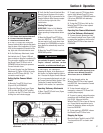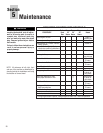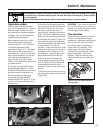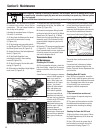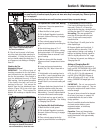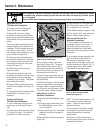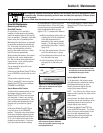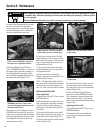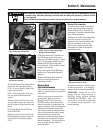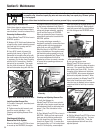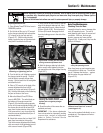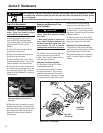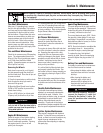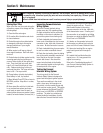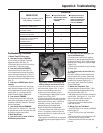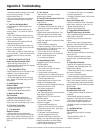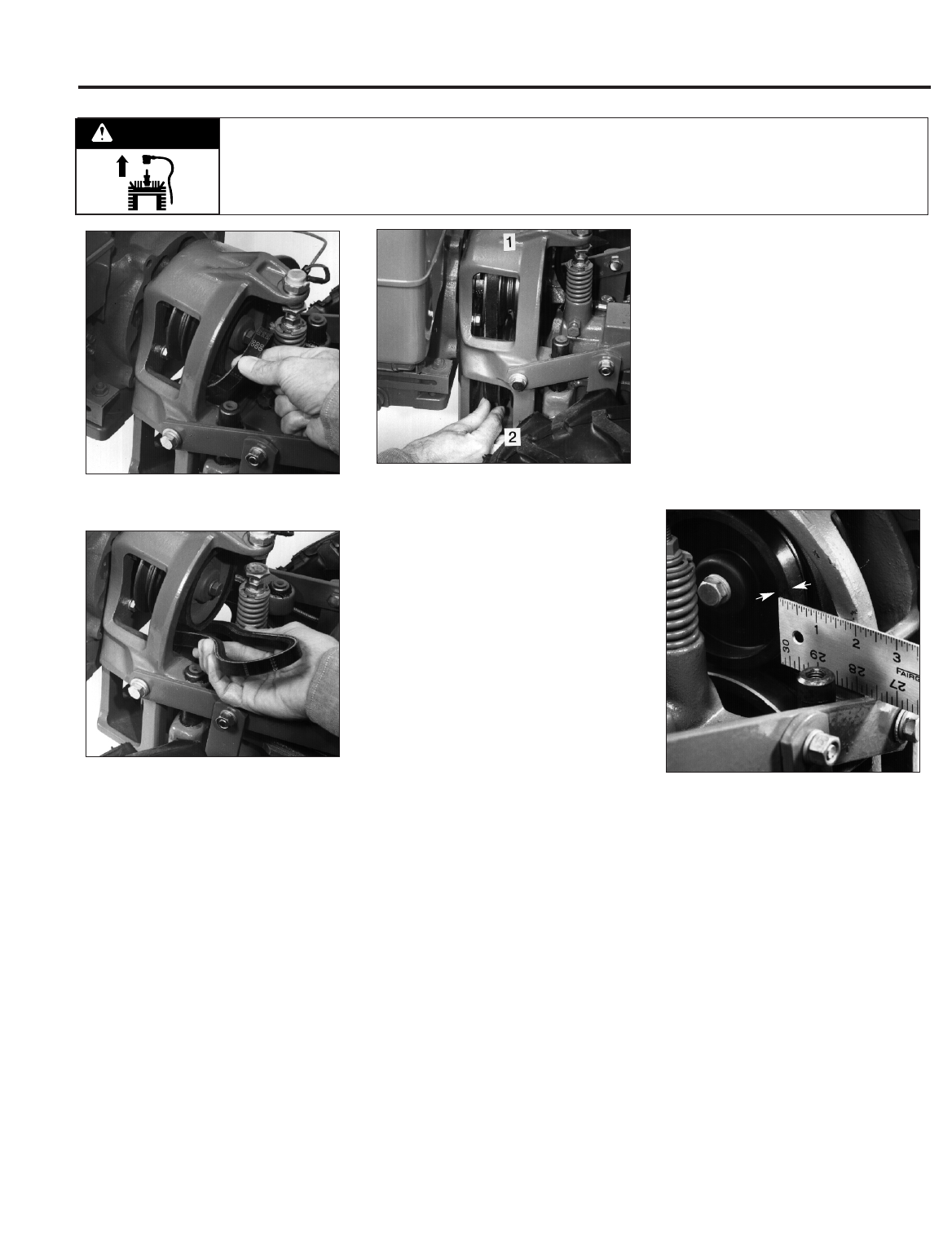
Section 5: Maintenance
3. Push belt forward then down until it is
looped over the lower pulley (Figure
5-18). Do not yet seat it in either of the
lower pulley’s grooves.
HINT: A blunt object, like a ruler, can
help you push the belt downward if
needed.
4. Move the top half of the belt up and
over the rubber reverse disc, but do not
seat it in either of the grooves in the top
pulley.
5. Place the Wheels/Tines/PTO Drive
Lever in NEUTRAL.
6. Move the top half of the belt into the
HIGH Range groove (groove closest to
the engine) on the top pulley (Figure
5-21).
7. Move the bottom half of the belt into
the HIGH Range groove of the lower
pulley (groove closest to engine— Figure
5-21). If extra slack is needed, hold up
Wheels/Tines/PTO Drive Lever while
moving the belt. Verify the belt is seated
properly on the pulleys.
8. To move the belt to the LOW Range
position, see Changing Belt Speeds in
Section 4.
9. After installing the belt, check and
adjust for correct belt tension as
explained previously.
Reverse Drive
System Maintenance
These instructions explain how to inspect,
replace or adjust the various reverse drive
components.
But first, here’s how the reverse drive
system works: When you raise the
Wheels/Tines/PTO Drive Lever up in
REVERSE position, this lowers the rub-
berized reverse disc (it’s attached to the
engine drive pulley) until this rotating disc
contacts the transmission drive pulley.
The friction between the rotating reverse
disc and the transmission pulley causes
the transmission drive shaft to be
powered in a counterclockwise direction
(as viewed from the operator’s position
behind handlebars). The drive shaft then
turns the wheels and tine shafts in a
reverse direction.
Reverse Disc Inspection
The reverse disc is made of steel with a
special, long-lasting rubber compound
bonded to the disc rim. Since this is a
wearing part, it should be inspected after
every 30 operating hours.
1. Measure the width of the outside edge
of the disc as shown in Figure 5-22.
Replace the disc before the rubber edge
wears to a thickness of 1/8" or less.
Failure to do so could cause the steel
underneath the rubber to damage the
transmission pulley.
2. Look for big cracks or missing chunks
of rubber from the disc. If so damaged,
the disc should be replaced immediately.
IMPORTANT: Extend the life of the
reverse disc by always pausing in
NEUTRAL before shifting between
FORWARD and REVERSE. Also – the
reverse disc is not suited for continuous
or sustained reverse operation. Use
reverse sparingly.
Figure 5-21: Seat belt in upper
pulley, then in lower pulley (High
Range position shown).
Figure 5-20: Shift into FORWARD
and remove the belt.
Figure 5-19: Move top half of belt
over pulley and reverse disc.
➦
➦
Before inspecting, cleaning or servicing the machine, shut off engine, wait for all moving parts to come
to a complete stop, disconnect spark plug wire and move wire away from spark plug. Remove ignition
key, if so equipped.
Failure to follow these instructions can result in serious personal injury or property damage.
WARNING
Figure 5-22: Measure the edge of
the reverse disc for wear.
35



